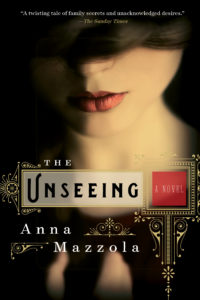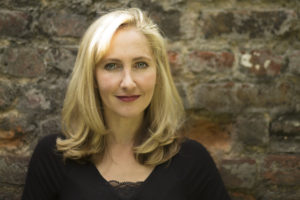Interview with Anna Mazzola 
How did you come across this story? What inspired you to write about it?
I first heard about the crime in Kate Summerscales’ The Suspicions of Mr Whicher. It’s mentioned only briefly, but grabbed my attention as it took place in Camberwell, South London, not far from where I live, and was both peculiar and horrific. The accused, James Greenacre, had distributed the body parts about London, transporting the head by omnibus to Stepney. However, when I read the trial transcript, it was Sarah Gale’s story that gripped me. She was accused of helping Greenacre to conceal the gruesome murder of another woman and yet in both the Magistrates’ Court and the Old Bailey she said almost nothing. Given that she was facing the death sentence, I thought that was very strange. What was keeping her from speaking out?
What were your main sources for your research? How did you organize everything? (That is, got any tips for fellow writers?)
I started off by researching the case itself (through newspapers, the National Archives, Old Bailey online, convict records and pamphlets), then the criminal justice system and Newgate prison. I read prison diaries and parliamentary commissions, I searched for sketches and pictures, and I studied plans of Newgate to get a sense of what that prison might have been like. In terms of the streets outside, I read journalistic works such as Mayhew’s London Labour and the London Poor, the fiction of the period, guidebooks, newspaper reports, court reports, letters, and the journals and memoirs of those who lived in or visited London.
In retrospect, I should have set out clear rules for myself at the outset as to what I needed to research and how much time I would spend on it. I spent over a year researching the Edgware Road murder, London in the 19th century, the status of women and criminal justice. Only a small fraction of that research made it into the book. Really, I should have just written the darned book and then filled in the gaps, which is what I’m doing with my second: broad research, first draft, more detailed research.
What were the biggest challenges you faced either in the research, the writing, or structuring the plot?
The biggest challenge was balancing fact with fiction. When I’m working as a solicitor, the facts are all important, but fiction is of course a different matter. As mentioned above, I spent a long time researching the facts of the case, but I spent even longer trying to prise myself away from them in order to write a story that anyone would want to read. That meant, at some points, diverging from the known facts of the case. I agonized over this for many months, and it is one of the reasons that a key theme of the novel is truth/deception. That also came from the case itself – the accounts given at trial and in the newspaper reports are inconsistent, and I became fascinated with how we interpret other people’s stories, and how we narrate our own.
Again, I think it would have helped had I set rules for myself at the beginning of the project: how closely am I going to stick to the historical facts?
Every writer has to leave something on the cutting floor. What’s on yours?
Originally (and for reasons I can’t explain without ruining the plot) half of The Unseeing was set on a boat. I have therefore read many accounts about 19th century shipping and written what is effectively an entirely separate novel. Maybe one day I will be able to use it for something!
Tag you’re it! What historical fiction author do you most admire? Why? Now forward these questions to him/her and we’ll share their answers next week!
I’m tagging Sophia Tobin who has written three excellent historical novels. Her latest, The Vanishing, is a dark and brooding mystery set in the gothic mansion of White Windows on the Yorkshire Moors.
 Anna Mazzola is a writer of historical crime fiction and strange short stories. Her acclaimed debut novel, The Unseeing, is published in the US on 7 February 2017. Anna is currently working on a second historical crime novel about a collector of folklore and missing girls on the Isle of Skye in 1857. Anna is also a criminal justice solicitor and child wrangler.
Anna Mazzola is a writer of historical crime fiction and strange short stories. Her acclaimed debut novel, The Unseeing, is published in the US on 7 February 2017. Anna is currently working on a second historical crime novel about a collector of folklore and missing girls on the Isle of Skye in 1857. Anna is also a criminal justice solicitor and child wrangler.
Missed our previous Five for Friday? Find last week’s interview with Essie Fox here. Check out our interview with Ami McKay about The Witches of New York or our interview with Eva Stachniak about her book The Chosen Maiden. Still craving some tidbits about fabulous women? Read our post about “Fashion as Resistance in WWII France” by Anne Sebba.


